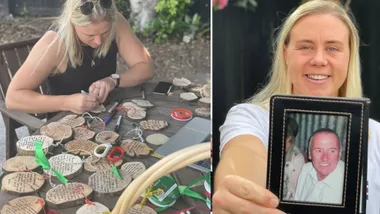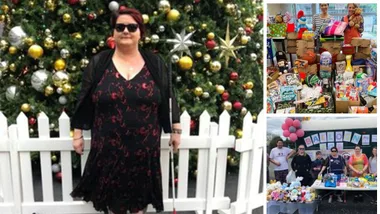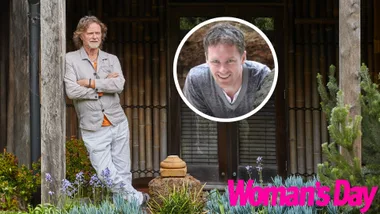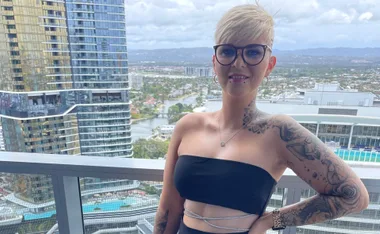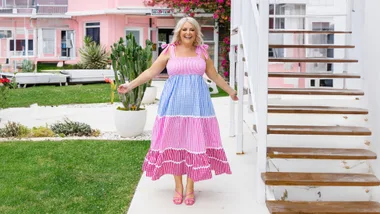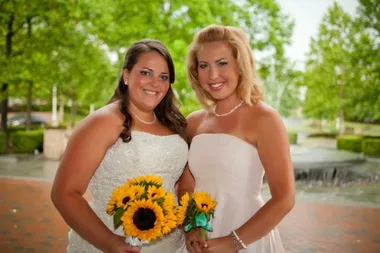- Cryonics expert, Philip Rhoades, 71, spent years discussing science and death with his beloved parents
- He hoped that by storing bodies at sub-zero temperatures, there was a chance of resurrecting them when the technology was developed – known as cryonics
- Now, they’re on ice, and Philip plans to join them, with maybe his ex-girlfriends, too
- Here, Philip from Cowra, NSW, shares his story with Take 5…
My parents lay on adjacent beds at the aged care facility in Sydney.
At least they’re side-by-side, I thought.
My dad, Gerald, 89, was hospitalised after suffering from dementia for several years, while my mum, Dorothy, 84, had a number of degenerative physical disorders.
It was May 2016 and Dad was in great physical pain.
I’d travelled seven hours from Cowra to see him but when I arrived, he was unconscious from the morphine.
Staff had kindly moved Mum’s bed into the room with her husband and she clutched his hand for almost 30 hours until, finally, he died.
“You have to let go now, Mum,” I said gently.
“I don’t want to,” she replied.
I understood how she felt.

Dad (Gerald) and Mum (Dorothy) were hospitalised in 2016 (Image: supplied)
We’d been a close family growing up, and I was one of seven kids.
Mum had been a science and maths teacher and Dad, an industrial chemist.
Throughout my childhood we’d had long conversations about science and the possibilities of human ingenuity.
“After I die, I want my body to be used for scientific purposes,” Dad told me.
I was certain that by the year 2000, scientists would have overcome the problem of death.
Yet, in 2016, I watched as my parents’ illnesses degraded their final years, before taking Dad’s life completely.
This is so unnecessary, I thought.

Dad was an industrial chemist and Mum a science teacher. (Image: supplied)
The agreement
“We need to salvage what we can,” I said to Mum.
She nodded, understanding what I meant, and let go of his hand.
I’d had many conversations with them about my intentions to have them preserved post-mortem.
Already I’d experienced the pain of losing my sister, Jenny, very suddenly when she was just 21 years old.
I’ll never again meet a mind quite like hers, I lamented. And I can’t get her back.
If it were possible to preserve the minds of my remaining loved ones, I intended to pursue it.
By the mid-90s I’d accepted the problem of death wouldn’t be solved in my lifetime, but science fiction had introduced the possibility that if you store bodies at sub-zero temperatures, there was a chance of resurrecting them when the technology was developed.
Known as cryonics, it was our best chance at immortality.

Mum knew of my intention to have her preserved post-mortem. (Image: supplied)
Some surgeries were already being performed at reduced temperatures to preserve organs, so I knew it was being explored.
I began volunteering with the Cryonics Association of Australia, lobbying to make pre-mortem freezing legal and helping to design Australia’s first cryonics centre.
“I want to freeze you after you’re gone,” I told Mum and Dad in the early 2000s. “You gave me a life, now I want to give you one.”
Mum, who was familiar with the statistics, said the chances of them being revived was less than 10 per cent.
“It’d be zero if you weren’t frozen,” I contended.
“Sounds like he’s going to do it anyway,” Dad mused.
“Well, I appreciate you trying,” Mum agreed.
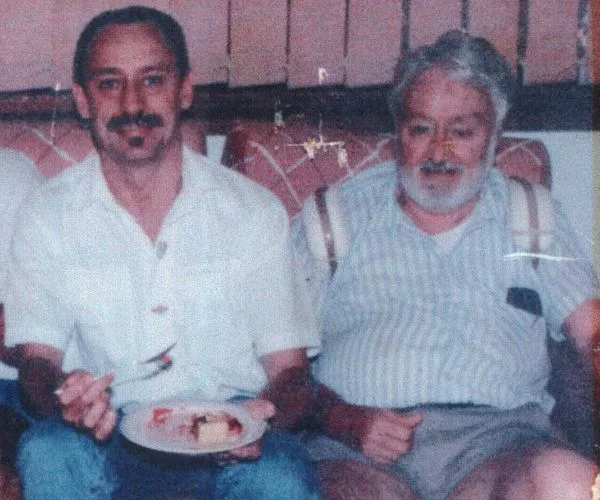
Dad had no opposition being frozen. (Image: supplied)
In 2004, I drew up plans for a facility to be built where my family members could be frozen in nitrogen after they die.
I was open to this becoming a public facility and shared my family’s plans with national media.
“Sounds a bit morbid,” one journalist said.
“If I’m clinically dead, it doesn’t matter what happens after that,” Mum replied cheekily. “If Phil wants to put me on ice, that’s okay with me.”
Now, lying beside Dad’s lifeless body, she released him to the cooling process.
Once Dad’s death was official, my siblings and I placed ice packs around his head to quickly get the temperature down.
Within hours, a cold vehicle transported his body to a nearby funeral home where his brain was extracted, which I, as next of kin, authorised.
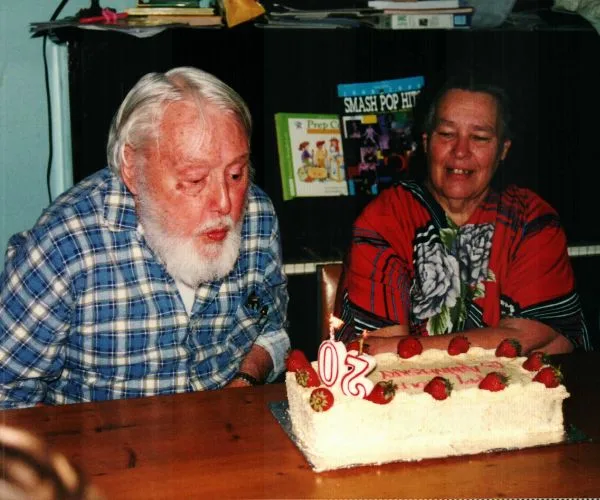
In 2004, I began designing a facility where my parents could be preserved. (Image: supplied)
We hadn’t yet built a full cryonics centre, but I’d established the Neural Archives Foundation that had the capacity to store brain tissue.
The rest of Dad’s body was donated to science.
It seemed his passing had a degenerative effect upon Mum, as only 10 days later, her heart also stopped beating.
I was pleased she was freed from pain and hoped she’d one day be reunited with us in an immortal form.
Mum and Dad’s neural tissue was stored alongside nine brains from other donors.
We don’t know what future technology will make of the information stored in their brain tissue.
Perhaps they’ll be reanimated inside new bodies or have their minds uploaded to a virtual world.
At the very least, it seems likely their memories will one day be accessible for their descendants via a Brain Computer Interface.

Hopefully, Mum and Dad’s memories will be accessible for their descendants. (Image: supplied)
The first cryonics facility
In February this year, I helped open Australia’s first cryonics facility, Southern Cryonics.
After I die, I’m able to have my full body kept frozen there until technology can resurrect me.
In my will, I’ve allocated neural archive options for my remaining siblings, their partners and children, along with eight of my good friends.
I hope we’ll one day all be reunited in forms no longer doomed to expire.
I’ve also left the option open to nine of my ex-girlfriends.
Although those relationships didn’t last romantically, I value each of their unique perspectives and wish for their minds to continue existing.

I want all my loved ones to have their minds preserved in the chance we’ll be reunited in the future. (Image: supplied)
Those I’m still in contact with are open to the idea, and I suppose the others will be in for a surprise once I die.
I’m now 71 and have early signs of the same brain disease as Dad.
If I could freeze myself before I experience mental decline I would, but it’s still not legal in Australia.
I’ll needlessly suffer a similar demise to my parents, but like them, I maintain hope that I’ll someday be revived, free to explore this universe for eternity.
Cryonics is the based on the expectation that humans could one day be brought back to life.
Dead bodies are stored in liquid nitrogen at freezing temperatures (-196°C)
When the technology is developed to resurrect people and cure all disease, frozen bodies will be eligible. Bodies which have been cremated or decomposed will not.
What is Neural Archiving?
What is cryonics?
Brains are frozen in an attempt to preserve the unique information they contain.
It’s hoped that memories could be recovered from the neural tissue and viewed by others.


